Lenses on Glitch, Part 2
Three artists share the perspectives that have shaped their work with glitch.
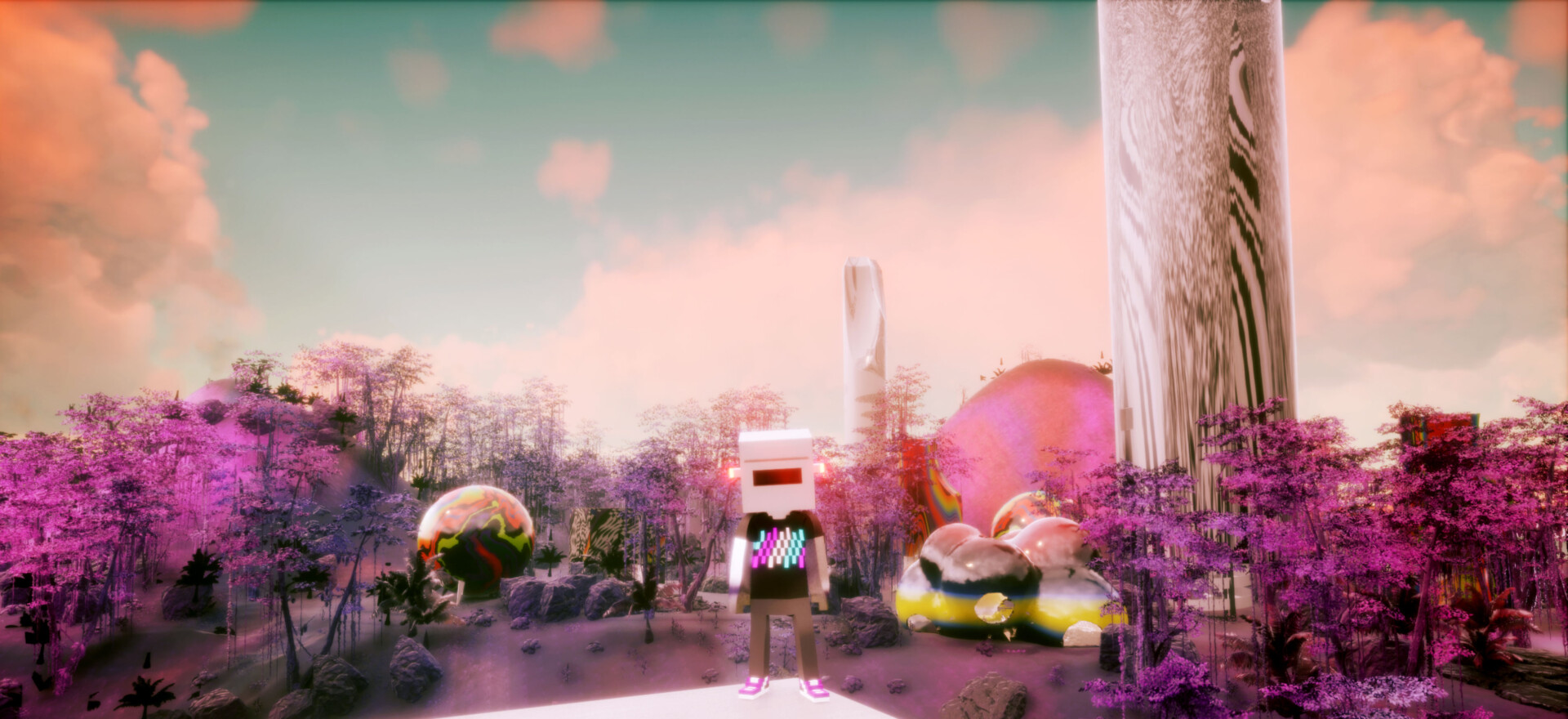
We’ve become accustomed to the idea that real-estate speculation and the creative economy are twin drivers of urban development. In the burgeoning worlds of the metaverse, the twinning of these processes is particularly stark. Land in on-chain virtual worlds has sold quickly to buyers who believe these places will become essential for the future of online communication, and a good deal of the construction there has been done for NFT galleries, as well as experiments in digital architecture. The same questions about land use, access, and the relationship between art and property that come up in discussions of real-world cities are now being asked of the metaverse, too.
What exactly is a metaverse? What makes it good or bad? Should it look like the physical world? Who has—or doesn’t have—access to virtual worlds? Who should be building them, and how decentralized should that process be? As part of Outland’s exploration of virtual worlds, led by guest editor Simon Denny, we spoke with five people, each of whom brings a distinctive perspectives on the matter: the creative director for one of web3’s most prominent virtual worlds; a metaverse aficionado who leads excursions to encourage virtual interaction; and three artists who are posing challenging questions about who the metaverse is for, how it is built, and how it can endure.
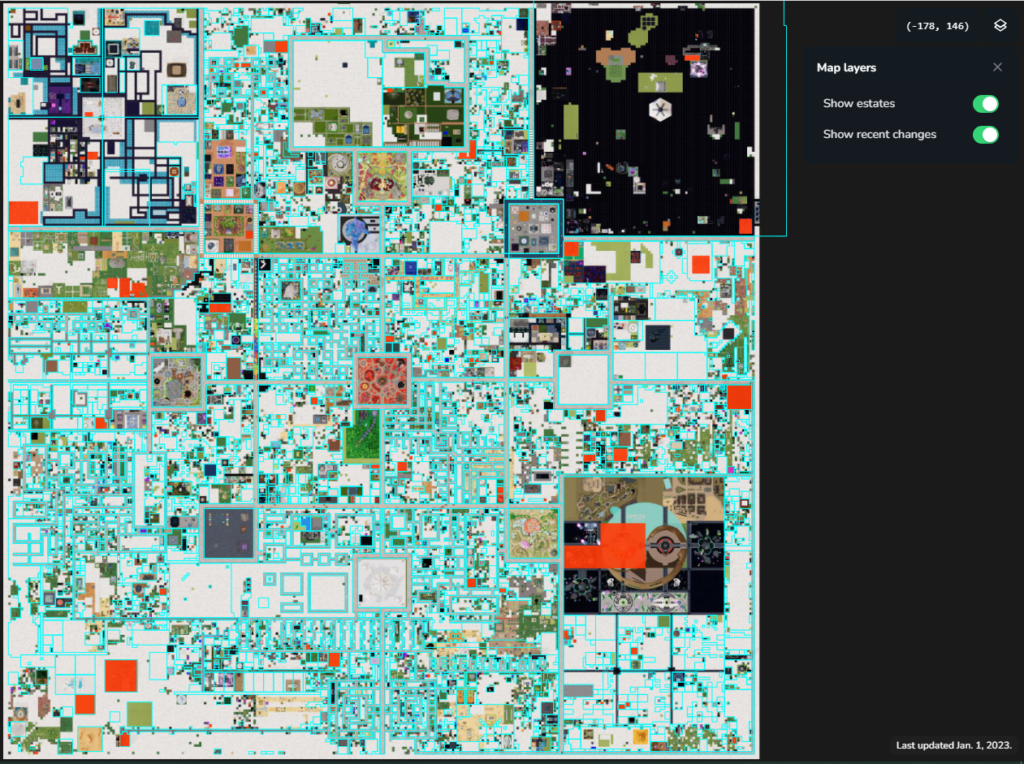
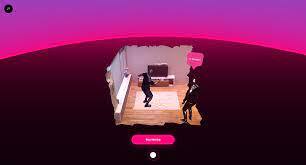
A metaverse is an extension of existence that manifests digitally either as an augmentation or an alternative to tactile existence. It is an environment in which human existence can be explored in the non-“real.” I’m building a decentralized metaverse that is accessible to people from the Global South on simple devices such as smartphones, with avatars that can be controlled using device sensors such as accelerometers. Users are able to connect with each other, whether in person or virtually or a combination of both, through the use of a “language of motion” developed specifically for the purpose of the environment. Users form connections in real time through dance and movement, no matter where they are in the world.
The most important conversation that this metaverse experiment explored was that of human-to-avatar representation. It was important for me to define what that means for a platform developed specifically for people in under-resourced and digitally marginalized parts of the world for whom online representation remains an unfulfilled dream. Representation latency is political because a handful of people in the Global North choose what the internet should look like, leaving billions in the Global South unseen and yet still exploited.
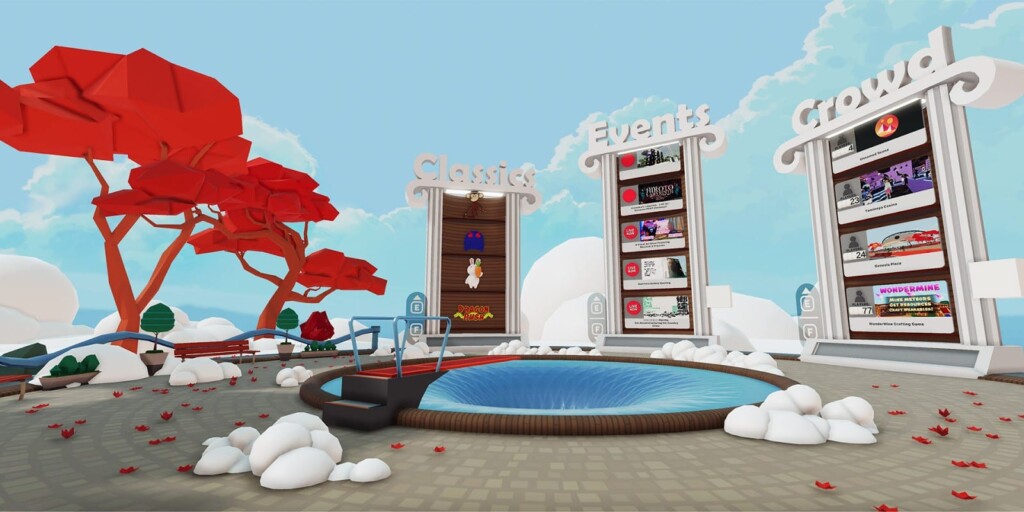
As I see it, we’re already living in a metaverse. We spent the last twenty years digitizing everything. We spend 75 percent of our free time online. But the UI is terrible. It’s not a human experience. It’s not something you feel fully immersed in. If you compare the metaverse to the history of film, we’re in the days of silent movies. We have decades of innovation ahead of us. Some people say the metaverse should be completely abstract. I believe that in some ways humans need to be grounded in something that we recognize. We follow conventional physics even though we don’t have to. We have streets, even though you can teleport from one place to another. Some people like walking down the street. And at the other end there might be a floating, animated building. That really stands out because it doesn’t happen in the real world.
In 2015 our founders had the idea to build a virtual world on the blockchain. There are 90,000 parcels of digital land that make up Genesis City, and the community bought that land back in 2017. The Decentraland Foundation builds plazas and roads, but the majority of the land is owned by the community and they’re allowed to build on it what they want. It’s all user-generated content. People build anything from casinos to universities, nightclubs, libraries. It has become such a huge project that I don’t think anybody knows everything that’s going on in Decentraland anymore. I used to pride myself on keeping track but I just don’t anymore.
The members of the community are all very passionate about the next iteration of the internet being more decentralized. One of the social experiments that Decentraland is performing is new governance mechanisms. When we sold all the land in 2017, it was 20 USD per parcel. People bought land up as speculators, and many of them never built anything. But we want to have a huge community of small builds. So we developed a rental system to incentivize people who are just sitting on their land to find a use for it, and to reduce the barrier of entry for people who want to come and build. Maybe somebody wants to throw a party for three days, or they want to do an activation for six months. We want to accommodate everybody. There are a lot of parallels to the real world in that way, in how land is used. Land has even been stolen from people, but there’s nothing we can do about it because it’s on the blockchain. And if we start reversing the blockchain, it makes a mockery of the whole project. It’s a different way of thinking about ownership and regulation. I remember when I was first told: “Be your own bank.” Initially, you find it so liberating. But then you wonder if you trust yourself.
I’ve been running the WIP [Work in Progress] Meetup on a weekly basis for a little over three years now. We visit different virtual worlds, to expose our audience to cool stuff that’s happening on a healthy mix of platforms. We often visit virtual art openings or recently completed builds, so our audience can get a tour and hear from the creator. You never really quite know where we’re going to end up, and that’s what appeals to our audience.
We were just starting when Voxels and Decentraland came out. Those were the first on-chain virtual worlds. There was a big explosion of people interested in creating virtual galleries to show off their crypto art. And a small pack of us were exploring these spaces and thought it would be cool to do a tour. The audio situation on these platforms was so janky back then. Everything crashed. Nobody could hear each other. We kept trying again to get it to work and over time the conditions improved. When it comes to designing a virtual world, I think a lot of platforms underestimate the importance of things like having a wide variety of emojis or dance moves or other ways your avatar can emote. Those ways of facilitating fun moments and human interaction are much more important than cutting-edge graphics. Now they’re getting better. It was a barren emotionless wasteland for a long time.
I own some plots in Voxels, a couple in Hyperfy, and some in Somnium Space and Sandbox that I haven’t messed around with. I’m not a great builder, so I hold the plots in case the value goes up significantly, or if I come across a builder who wants to do something cool on my land. I feel like the parcel model is good in theory but didn’t play out well in practice. When you hop into a metaverse and all the plots are purchased but only a fraction of them have builds, it’s not great optics. It looks like a parking lot. So I think Mona’s concept is cool—they provide a toolkit for building a space, and once it’s built it can be sold. You don’t have to start by owning. Spatial does the same thing. On the other hand, I like the parcel model’s unpredictability. You never know what your neighbors are going to do. Unexpected encounters can be cool, but too much was bought up in the investment mindset. And I don’t know how you reverse course.
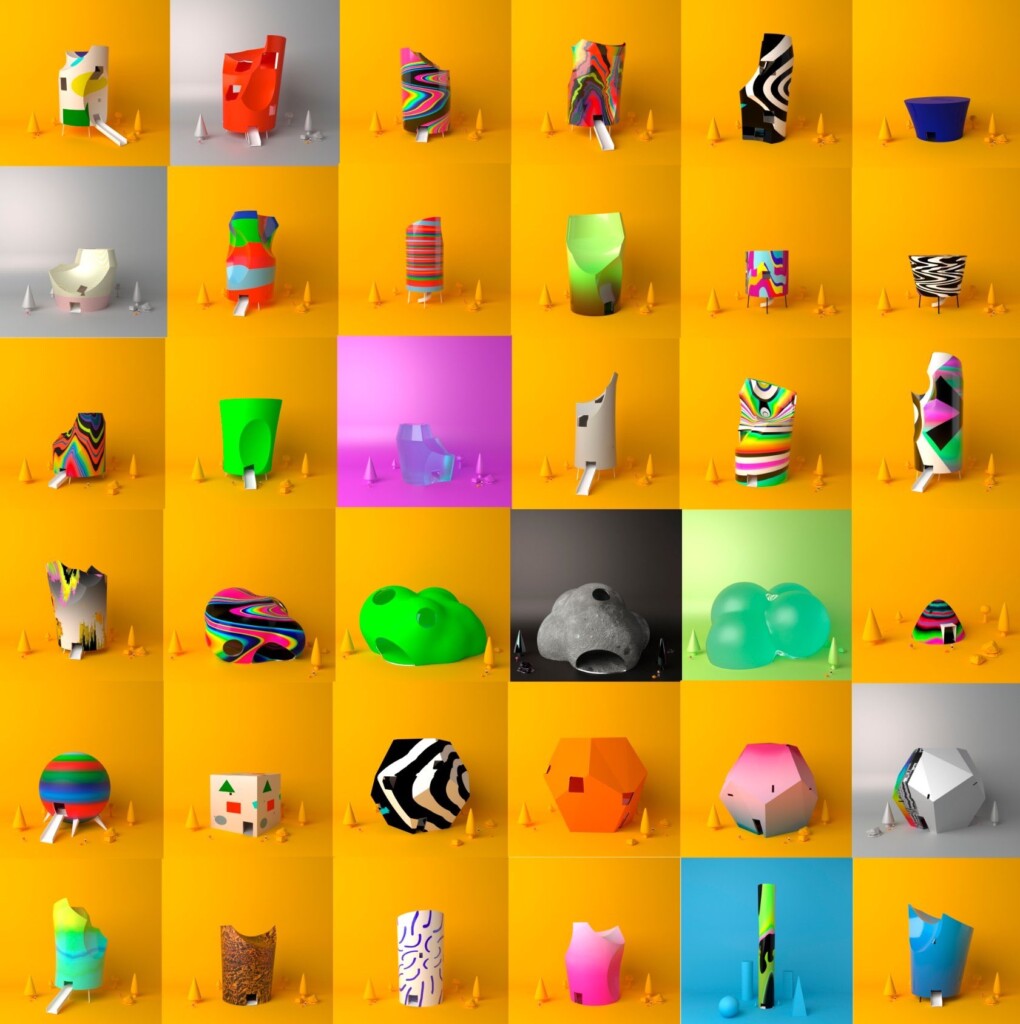
The metaverse represents the virtual context in which we can create multifaceted experiences for the audience, changing the way stories are told and encountered. It can be seen as an extension of the real world, where people can engage with a story in multiple ways and explore different aspects of the narrative, or even a different version of themselves. We’re currently seeing a trend of thinking about the metaverse as similar to a first-person shooter video game, where players can wander through virtual lands and experience the story from a personal perspective. While limited in scope, as an interaction model this type of experience is interesting as it provides a new level of immersion and creates a unique connection between the player and the narrative.
Digital land has become the most representative icon of the metaverse in the NFT space, with people selling and trading parcels of virtual land. What’s puzzling is the convention of applying IRL measurements when defining scale and limitations in virtual spaces. This led me to start a project called Infinites Islands (2021-), for which I envisioned giving collectors a large, less defined piece of land—an entire island, continent, or even world, instead of the standard 20-meter-square plot. I also wanted to consider the micro-scale, so I developed Solids (2022), a proposal to provide a collector with a 3D model of a building that can be placed in any metaverse, and even contain a metaverse inside it. I applied a Russian Doll metaphor to environment-building.
Every gesture is political, even more so when building a world. Urban planning in the physical world can be seen as arrogant, a form of domination. The same can be said for the creation of virtual worlds. However, there are some promising metaverse projects, such as Hyperfy, which offer an endless canvas for users to build and shape their virtual world. This is where the metaverse becomes truly intriguing. The extent to which the original creator of a metaverse empowers its users to participate in worldbuilding determines its potential for innovation and creativity.
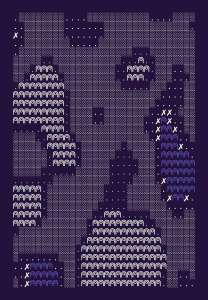
“Metaverse” is still most-commonly used to mean social 3D worlds like VRChat. I like those products, but in the crypto scene they’re often touted as the future in a way that seems disingenuous or extremely unconsidered. How people relate to virtual environments and computers will keep changing. Even file format on static 3D models turns over every few years. So how can any given instance of these so-called metaverse products still meaningfully exist in ten years, let alone fifty or one hundred? Are there any 3D computing objects that actually could persist? How minimal would they have to be to endure the tides of context shift? In part, Terraforms was made to ask a bundle of questions around the longevity of 3D computing.
The 3D structure of Terraforms is non-visual. It’s not rendered. It has no definitive visual presentation. It’s an abstract reinterpretable skeleton. The obsolescence waves that continue to crash against 3D render visual culture don’t touch it. It’s also not a 3D model. It’s a live computer program you can talk to, always running on Ethereum, which I believe is likely to outlive me. Aspects of the piece change slowly over time via public interaction, so the forms you get are dynamic. People can also deploy and connect their own programs to it if they desire, and they don’t need our permission. It’s a runtime object as artwork—a minimal, durable, interoperable composition for a world computer paradigm. A small scene has formed around connecting to Terraforms and depicting it. We hold a computing art course in our Discord, a kind of salon where people are both learning to code in the context of artmaking, and also question orthodoxies of crypto and computing. If a runtime artwork that computes 3D forms can serve as a hub for culture-making, that feels quite good to me. It also does feel like a “place” in a way. If “metaverse” meant a substantive culture and economy, for literary, multiplayer, interoperable, computer program artworks, perhaps I could embrace the word. But in general it seems like an overloaded term.
